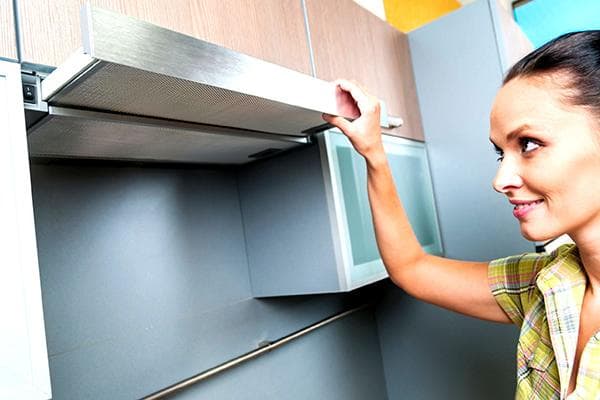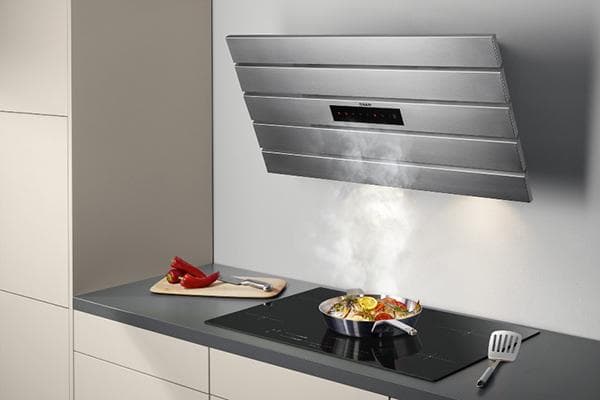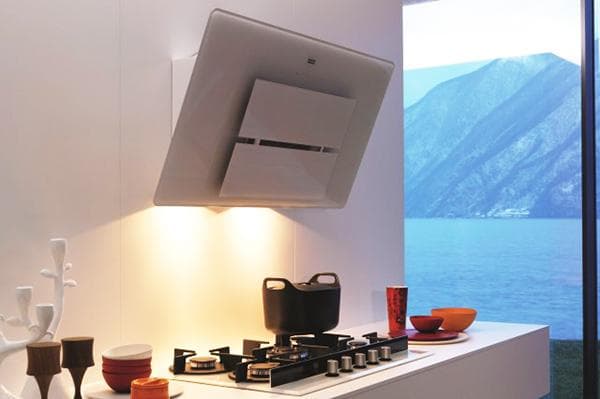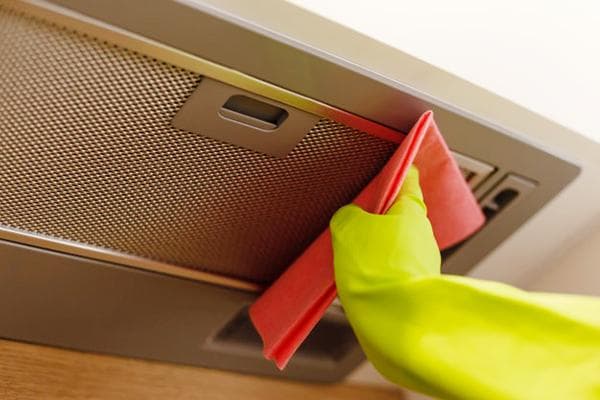How to use a modern kitchen hood?
The effectiveness of an air purifier largely depends on its correct use. And if with classic models everything is more or less clear, then many do not know how to use an inclined hood. In fact, both types of devices work the same way. There are no significant differences in management, except for the ability to use new functions.
A range hood is a very important appliance in the kitchen. It absorbs unwanted odors and fumes, which, in addition to irritating the olfactory organs, are frankly harmful to the health of the cook. During the cooking process, dangerous compounds are released such as formaldehyde, benzopyrene, ammonia, acrolein, perylene, chrysene and others. And if the stove is gas, then the toxic cocktail additionally contains carbon monoxide, carbon dioxide, nitrogen and sulfur, radon, and soot.

General rules for using hoods
How to use a kitchen hood correctly? There are 4 main rules:
- There is no need to wait until the kitchen is filled with acrid smoke and steam. The hood is turned on as soon as the cooking process begins, or a few minutes before. This is how she copes with her task as efficiently as possible.
- Increase power gradually. It is not recommended to turn on the device at full power immediately. This creates additional load on the electric motor. To extend its service life, a soft start is performed. Start with the lowest power and then adjust according to your needs.
- Turn off the device when the air is completely clean and fresh. After finishing cooking, leave the hood to work for another 5–15 minutes. First of all, food that has just been cooked is still steaming. Secondly, particles of compounds and odors are carried throughout the room by a draft created by movement around the kitchen, open windows, and doors. It takes time to completely clean a room.
- Do not cook food under the hood using an open flame. Flambing and grilling over an open fire creates a fire hazard - fatty deposits on the hood filter can easily ignite.
Operation of circulation, exhaust and combined hoods
There are two main types of devices.
- Branches.
The device is connected by a sleeve to the ventilation duct. The air entering the duct is discharged outside the house.
- Circulating.
Polluted air is passed through filters and returned purified back to the room. A carbon filter is required for operation.
Modern hoods are mostly combined and can operate in both air intake and recirculation modes. The first one is characterized by high randomness (30–35% higher). It is recommended to use it when frying, cooking dishes with a lot of fumes (for example, stewing cabbage). The recirculation mode is considered universal and can be used both during the cooking process and to improve air exchange in the kitchen.
A hood mounted above a gas stove must not be used in air circulation mode, as air currents can extinguish the fire. When using inclined type of equipment, there is less fire hazard.But still, the possibility of turning on recirculation requires consultation with a gas service specialist.
How to use an inclined hood?
The inclined type of hood has many advantages over classic models:
- The modern device has high power and is characterized by quiet operation of the electric motor.
- Inclined hoods operate on the principle of perimeter suction. Unlike conventional devices, which absorb dirt over the entire area of the working panel, in these models the air flow passes through narrow slots located around the perimeter. This creates powerful vortex flows (Coanda effect). Polluted air flows directly to the filter elements and is not dispersed into the room.
How to properly use an inclined hood when cooking:
- Turn on the device and select the desired mode.
- If you decide to use manual settings, select the minimum power.
- If there is a large volume of evaporation, increase the power.
- After finishing cooking, turn off the appliance (the residual stroke should work).
The inclined position of the hood allows you to free up 70% of the space above the stove. Such devices are small-sized, laconic and absolutely not bulky. Some models allow you to adjust the incline level, increasing productivity.
Automatic operation
Inclined hoods are modern and functional. The device has built-in sensors that determine the level of humidity, the presence of smoke, and steam. It also responds to rising temperatures.
You can not only adjust the traction force and air circulation speed to suit your needs, but also fully automate the air purification process.In other words, the hood automatically turns on itself as soon as you start cooking. The device selects optimal power and other operating parameters in accordance with the degree of air pollution. When the room is completely cleaned, it goes into standby mode.
The program is activated in different models of hoods in different ways: “R”, by pressing “+” and “–” together.
Ventilation at intervals
Another useful operating mode for the hood. When activated, the device will periodically turn on independently and purify the air in the kitchen.
Many people do not even suspect that even when nothing is being prepared, the room is filled with unwanted compounds. In addition to the stove, detergents, cleaning products and furniture, especially new ones, are sources of air pollution.
Caring for the hood and changing filters
As contamination increases, the efficiency of the hood decreases. Grease and soot clog the filters and allow less air to pass through. It is very important to clean them and replace them in a timely manner.
How to properly care for the device?
- The external surfaces of the hood should be washed 1-2 times a week with a soft cloth and dishwashing detergent. The use of abrasives, caustic alkalis and acids is prohibited.
- Carbon filters are replaceable and must be replaced every 2–4 months.
- Grease filters are removed and washed using grease-dissolving agents approximately once every 2 months.
When changing filters, the device must be de-energized by disconnecting it from the electrical network.
So, inclined hoods have improved functionality. You can use them manually in exactly the same way as classic models. Can you turn on automatic



Thank you for explaining to me the difference between a regular and inclined hood. Yeah, the slanted hotpoint suits me better.
A very detailed article that helped to understand how hoods work. Now it’s easier to choose which one you need.
Thank you, you are a very competent specialist who helps people.